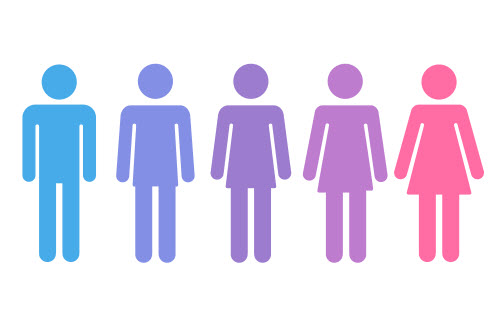Yesterday we looked at how employers can get ahead of the game when it comes to creating a system for fairly handling employees who are going through gender transition. Today we’ll look at how to handle the pushback and the importance of keeping in touch with employees that are transitioning.
 |
Handling Pushback
Remind your other employees that it is inappropriate—if not harassment—to continue to refer to a coworker using a pronoun or name with which they do not identify. And if you’re unsure which pronoun a person prefers, it’s appropriate to ask in a respectful manner, the speakers said.
If a coworker complains about an employee’s transition—citing her religious beliefs, for example—the speakers recommend making clear that you are not asking her to change her beliefs or serve as an advocate for her transgender coworker. You are merely asking her to comply with company policy and exhibit respect. Legally, you do not need to make any changes for her. The Intel reps noted, however, that they do not stop an unhappy employee from pursuing other positions within the company.
You’ll also have to decide how you will handle unhappy external contacts. Breslin and Epstein said they had a client who did not want to work with an Intel employee after the employee had transitioned. You need to talk about that, the speakers said. What is your company going to do? Intel refused to assign the client to a different rep and says it worked out fine: the client stayed on with Intel.
Staying in Touch
Employers also should remember that their job is not finished once an employee’s transition is complete. The support team needs to check in with the employee and his or her manager, the speakers said.
Be informed. Ask whether all parties’ expectations have been met and whether they have any concerns, Breslin and Epstein recommended.
Understanding Nondiscrimination Requirements
No federal law protects employees based on transgender status. The Employment Non-Discrimination Act (ENDA) has been proposed in Congress every year but one since 1994, but has not been passed into law. The bill was patterned after Title VII of the Civil Rights Act of 1964 (Title VII), and would apply to employers of 15 or more employees. Currently, a patchwork of state and local laws prohibit employment discrimination on the basis of transgender status.
The U.S. Equal Employment Opportunity Commission (EEOC), however, interprets and enforces Title VII as forbidding employment discrimination based on gender identity (and sexual orientation).
EEOC acknowledges that Title VII “does not explicitly include sexual orientation or gender identity in its list of protected bases [but] consistent with Supreme Court case law holding that employment actions motivated by gender stereotyping are unlawful sex discrimination and other court decisions, interprets the statute’s sex discrimination provision as prohibiting discrimination against employees on the basis of sexual orientation and gender identity.”
In addition, the U.S. Department of Labor’s Office of Federal Contract Compliance Programs (OFCCP) released updated sex discrimination regulations for contractors in June. Among other things, the final rules specify that discrimination based on gender identity or transgender status is considered sex discrimination; for example, contractors must allow workers to use bathrooms consistent with the gender with which they identify, OFCCP said.
